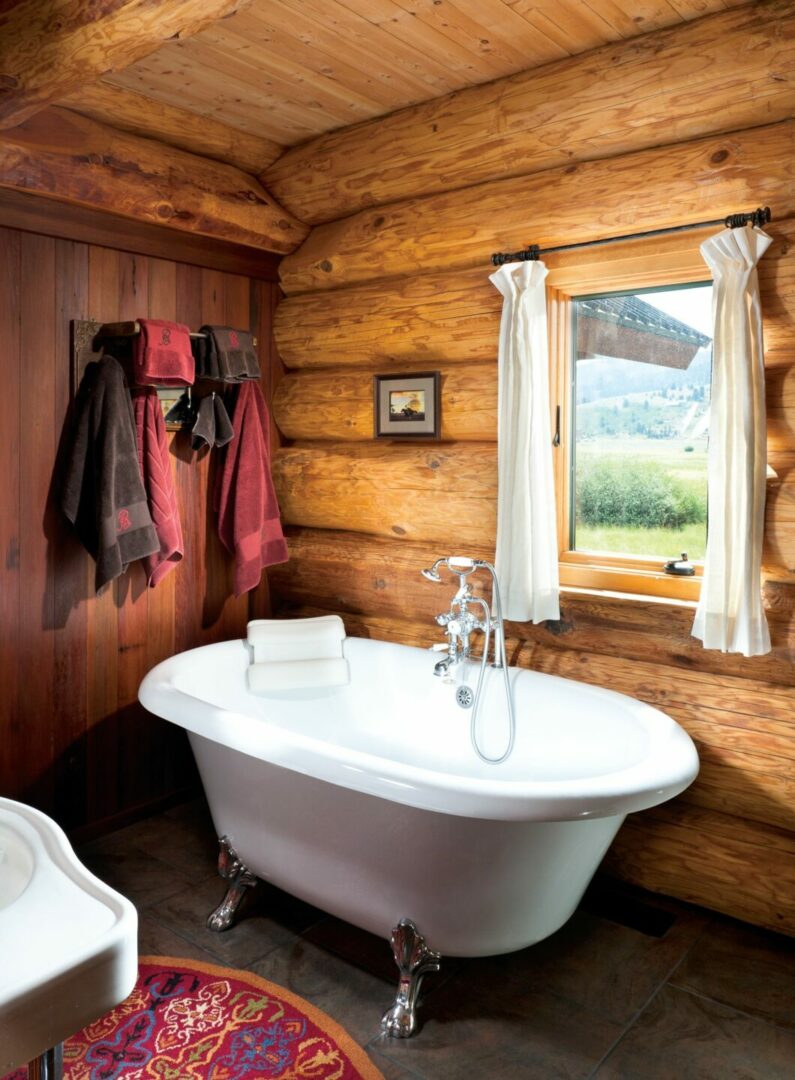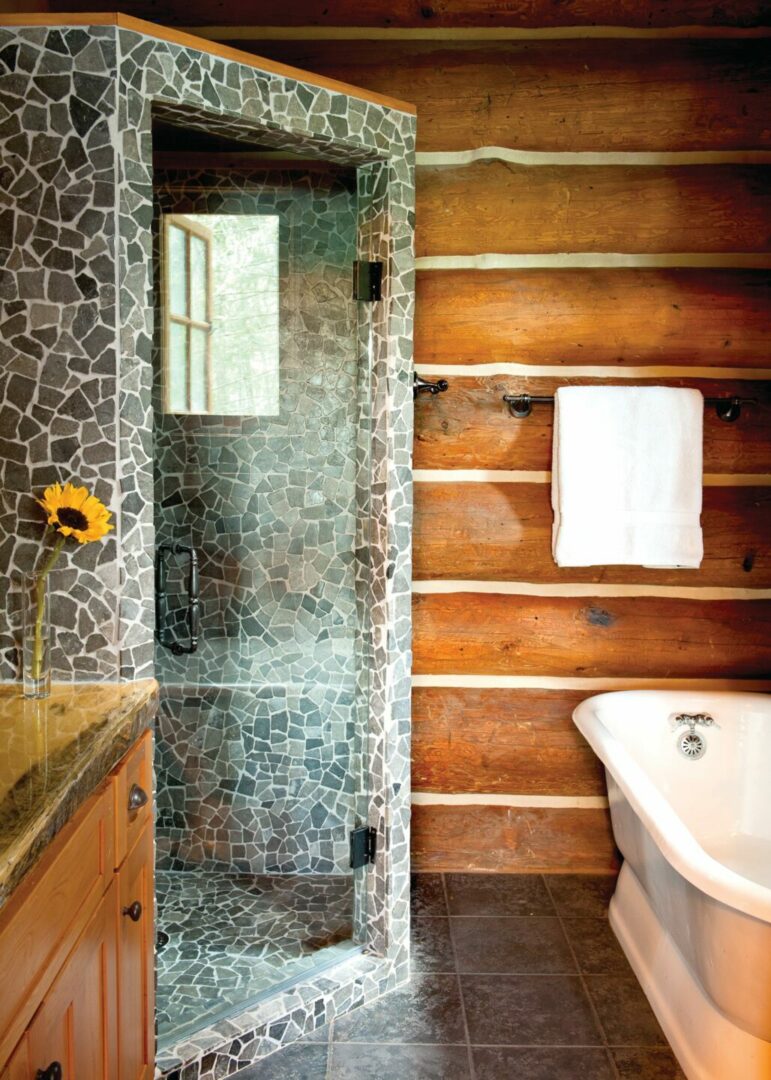With sound professional advice, your master bathroom can be the spa-like retreat you’ve dreamed of, without sacrificing practical necessities.
In my ideal world, my master bathroom would be a combination of spa-like luxury and minimalist cool: clean lines, natural light, and high-end materials. But my dreams don’t account for the fact that a bathroom has to be functional, too. I need somewhere to store my makeup and toiletries, and there has to be room for extra towels and toilet paper! Luckily, today’s bathroom designs can be beautiful and functional at the same time—and that’s where the advice of a professional designer can make a world of difference.
Don’t skimp on space
As you start planning your master bathroom, it can be tempting to cut back on square footage in a room that is not “public” like the kitchen or great room; but think twice before you commit to that approach. Matt Franklin, lead architect at M.T.N Design in Meridian, Idaho, says that he is seeing more spacious, spa-like bathrooms with lots of natural light in log and timber-frame homes. “The bathrooms that I really like are the ones that are open and have a lot of light,” he says. “That’s a big trend that we’re seeing—making sure you have plenty of windows and light.”

If you’ll be sharing the space with a spouse or significant other, dual sinks are wonderful. It also helps to have enough room so that you are not stepping on each other’s toes as you get ready in the morning or wash up before heading to bed. “Overall, make sure you have plenty of circulation space—so if there’s a person in there brushing their teeth, there is room for another person to get in there, too, without tripping over each other,” says Franklin.
Another important reason to consider a spacious master bath is accessibility. A master bath that is designed using universal design principles will be more functional as you age or if your mobility is impaired. “I try to get clients to think about accessibility—making sure that if you are ever in a wheelchair or need to use crutches at some point you can still function in that space,” says Franklin. “Some of the possibilities include having a large curb-less shower; and if you have an enclosed commode, make it big enough so that you can get into it freely.”
Personalize your space
There are a few essential elements that make a bathroom a bathroom. At the most basic level, you need a toilet, sink, and bath and/or shower. From there, the world is your oyster! Ceramic tile or marble? Jetted tub or freestanding claw-foot tub or no tub at all? It all comes down to your personal style and your budget. “We do see a lot of ceramic tiles,” says Franklin. “There are hundreds of thousands of tile options.” Although white is very popular, many homeowners have started opting for darker ceramic tiles with a faux-wood look. “In a bigger, brighter space, having that darker tile floor can focus things.” It’s also a good idea to keep universal design in mind when you are selecting your bathroom’s essential elements, e.g., a higher commode that will be easier to access as you age, and flooring that won’t be too slick when wet.
Splurge a little
Franklin advises his clients to splurge on a really nice granite or quartz countertop because they get so much use. “Focus on elements you need and focus on fixtures that are the most visible—like vanities and sinks,” he says. “If the commode is enclosed, you don’t need to go top-of-the-line. Instead of using a lot of tile on walls, go with sheetrock walls and spend money on better tile for the shower and floors.”
What are some expenses that are totally worth it in a master bathroom? Everyone’s list will differ, but more and more of Franklin’s clients have been opting for steam showers and much larger showers in general. Other “nice-to-haves” include in-floor radiant heat (at least in front of the vanity and outside the shower and bath), bidets, and towel-warmers—all of which can be fairly affordable. “We just met some folks whose must-have is a towel warmer—they just returned from a trip to Europe, where they had towel-warmers in their room and decided they had to have one at home,” says Franklin.
If you do opt for a bathtub, find one that will be a showpiece. “There are a lot of really cool, freestanding tubs that are pieces of art in of themselves,” says Franklin. The choices are endless, from old-fashioned claw-foot tubs to hammered copper, luxurious marble, modern slipper tubs, or wooden Japanese-style soaking tubs.

Make room for storage
It’s not the first thing people think about when designing a master bathroom, but it is still important. “It’s amazing how little thought people often give to their master bath until we sit down and start planning,” says Franklin. “A couple of things I like to bring to the forefront are to think about storage for linens, cleaning supplies, and toiletries.” If you have your heart set on a pedestal sink, you could add a free-standing armoire or floating shelves to store linens and supplies.
With sound professional advice, your master bathroom can be the spa-like retreat you’ve dreamed of, without sacrificing practical necessities.

